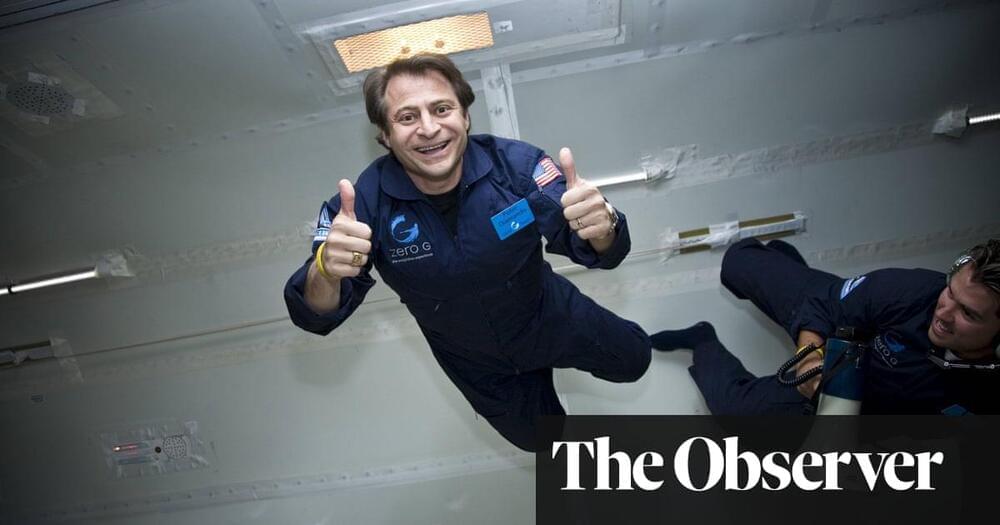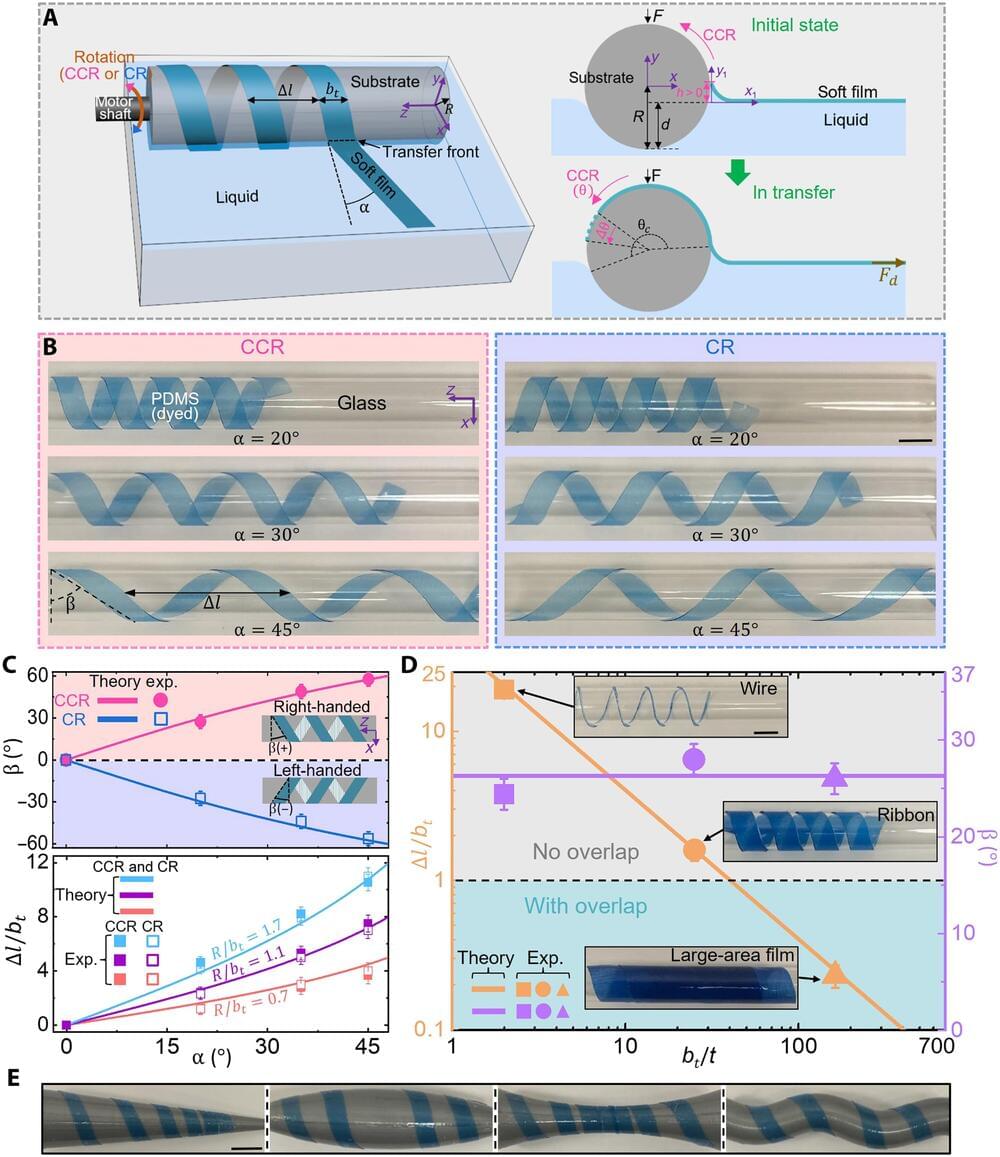The only areas where AI is flourishing are shamming, spamming & scamming.
Get the latest international news and world events from around the world.

Magnetic nano-boost can supercharge antitumor treatment for an alternative cancer therapy
A new efficient system of cancer treatment using vitamin k3 (Vk3)-loaded copper zinc ferrite nanoparticles having therapeutic capabilities, could benefit millions of cancer patients worldwide.
With the ever-increasing prevalence of cancer cases worldwide, newer approaches to cancer therapy are increasingly needed to tackle the problem. Since conventional cancer therapies such as chemotherapy, radiation therapy and surgery have significant drawbacks such as resistance to chemotherapeutic drugs, adverse effects and lower efficacy, development of nanotherapies that can target hypoxic (when oxygen is not available in sufficient amounts at the tissue level) tumors, with minimum side-effects is necessary.
At present, magnetic hyperthermia-based cancer therapy (MHCT) therapy has been shown to be therapeutic. However, in most cases, it is not as effective due to the generation of lower levels of reactive oxygen species (ROS) in a hypoxic tumor microenvironment (TME) and low heat transmission.

Peter Diamandis: ‘In the next 10 years, we’ll reinvent every industry’
Peter Diamandis is best known as the founder of the XPrize Foundation, which offers big cash prizes as an incentive for tech solutions to big problems. The entrepreneur and investor is also co-founder of the Singularity University, a Silicon Valley-based nonprofit offering education in futurology. His new book, The Future Is Faster Than You Think, argues that the already rapid pace of technological innovation is about to get a whole lot quicker.
Do you think people are worried about where technology is going to take us? I can palpably feel how fast things are changing and that the rate of change is accelerating, and I have picked up a growing amount of fear coming from people who don’t understand where the world is going. And that is not good when you’re trying to solve problems. This book is about giving people a roadmap for where things are going over the next decade so they have less fear and more anticipation. Because, yes, in the next 10 years, we’re going to reinvent every industry on this planet, but the change is one that is for the benefit of masses, whether it’s in longevity or food or banking.

Google Secretly Showing Newspapers an AI-Powered News Generator
Google is secretly showing off an AI tool that can produce news stories to major newspapers, including The New York Times, The Washington Post, and The Wall Street Journal.
The tool, dubbed Genesis, can digest public information and generate news content, according to reporting by the New York Times, in yet another sign that AI-generated — or at least AI-facilitated — content is about to flood the internet.
Google is stridently denying that the tool is meant to replace journalists, saying it will instead serve as a “kind of personal assistant for journalists, automating some tasks to free up time for others.”

Shattering Conventional Wisdom — Surprising Discovery Could Transform the Future of Electrochemical Devices
Researchers from the University of Cambridge have unveiled a surprising discovery that holds the potential to reshape the landscape of electrochemical devices. This new insight opens the door for the creation of cutting-edge materials and paves the way for enhancements in sectors like energy storage, neuromorphic computing, and bioelectronics.
Electrochemical devices rely on the movement of charged particles, both ions, and electrons, to function properly. However, understanding how these charged particles move together has presented a significant challenge, hindering progress in creating new materials for these devices.
In the rapidly evolving field of bioelectronics, soft conductive materials known as conjugated polymers are used for developing medical devices that can be used outside of traditional clinical settings. For example, this type of material can be used to make wearable sensors that monitor patients’ health remotely or implantable devices that actively treat disease.
Dr. Joni L. Rutter, Ph.D. — Director, National Center for Advancing Translational Sciences — NIH
Dr. Joni L. Rutter, Ph.D., (https://ncats.nih.gov/director/bio) is the Director of the National Center for Advancing Translational Sciences (NCATS — https://ncats.nih.gov/) at the U.S. National Institutes of Health (NIH) where she oversees the planning and execution of the Center’s complex, multifaceted programs that aim to overcome scientific and operational barriers impeding the development and delivery of new treatments and other health solutions. Under her direction, NCATS supports innovative tools and strategies to make each step in the translational process more effective and efficient, thus speeding research across a range of diseases, with a particular focus on rare diseases.
By advancing the science of translation, NCATS helps turn promising research discoveries into real-world applications that improve people’s health. The NCATS Strategic Plan can be found at — https://ncats.nih.gov/strategicplan.
In her previous role as the NCATS deputy director, Dr. Rutter collaborated with colleagues from government, academia, industry and nonprofit patient organizations to establish robust interactions with NCATS programs.
Prior to joining NCATS, Dr. Rutter served as the director of scientific programs within the All of Us Research Program, where she led the scientific programmatic development and implementation efforts to build a national research cohort of at least 1 million U.S. participants to advance precision medicine. During her time at NIH, she also has led the Division of Neuroscience and Behavior at the National Institute on Drug Abuse (NIDA). In this role, she developed and coordinated research on basic and clinical neuroscience, brain and behavioral development, genetics, epigenetics, computational neuroscience, bioinformatics, and drug discovery. Dr. Rutter also coordinated the NIDA Genetics Consortium and biospecimen repository.
Throughout her career, Dr. Rutter has earned an international reputation for her diverse and unique expertise via her journal publications and speaking engagements, and she has received several scientific achievement awards, including the 2022 Rare Disease Legislative Advocates–RareVoice Award for Federal Advocacy and the 2022 FedHealthIT–Women in Leadership Impact Award.
Dr. Rutter received her Ph.D. from the Department of Pharmacology and Toxicology, Dartmouth Medical School, Hanover, New Hampshire, and completed a fellowship at NCI within the Division of Cancer Epidemiology and Genetics.

Soft robotics research offers new route for weaving soft materials into 3D spatial structures
Ever wonder why the most advanced robots always seem to have hard bodies? Why not more pliable ones, like humans have?
Researchers working on so-called “soft robotics” attempt to incorporate the feel of living organisms into their creations. But the field hasn’t taken off because the softer components haven’t been easy enough to mass-produce and incorporate into the designs—until now.
University of Virginia researchers have invented a manufacturing process for weaving soft materials such as fabrics, rubbers and gels so that they can be compatible with gadgets, which may lead to a soft robotics revolution.

IBM reports analog AI chip patterned after human brain
Deep neural networks are generating much of the exciting progress stemming from generative AI. But their architecture relies on a configuration that is a virtual speedbump, ensuring the maximal efficiency can not be obtained.
Constructed with separate units for memory and processing, neural networks face heavy demands on system resources for communications between the two components that results in slower speeds and reduced efficiency.
IBM Research came up with a better idea by turning to the perfect model for its inspiration for a more efficient digital brain: the human brain.

Indian rover begins exploring Moon’s south pole
India began exploring the Moon’s surface with a rover on Thursday, a day after it became the first nation to land a craft near the largely unexplored lunar south pole.
Pragyan— Wisdom in Sanskrit—rolled out of the lander hours after the latest milestone in India’s ambitious but cut-price space program sparked huge celebrations across the country.
“Rover ramped down the lander and India took a walk on the moon!” the Indian Space Research Organisation (ISRO) posted on X, formerly known as Twitter, on Thursday.

Nvidia’s rising star gets even brighter with another stellar quarter propelled by sales of AI chips
Computer chip maker Nvidia has rocketed into the constellation of Big Tech’s brightest stars while riding the artificial intelligence craze that’s fueling red-hot demand for its technology.
The latest evidence of Nvidia’s ascendance emerged with Wednesday’s release of the company’s quarterly earnings report. The results covering the May-July period exceeded Nvidia’s projections for astronomical sales growth propelled by the company’s specialized chips—key components that help power different forms of artificial intelligence, such as Open AI’s popular ChatGPT and Google’s Bard chatbots.
“This is a new computing platform, if you will, a new computing transition that is happening,” Nvidia CEO Jensen Huang said Wednesday during a conference call with analysts.